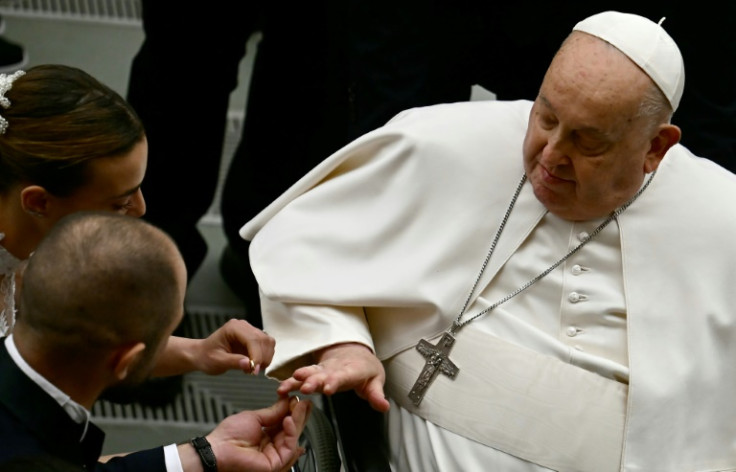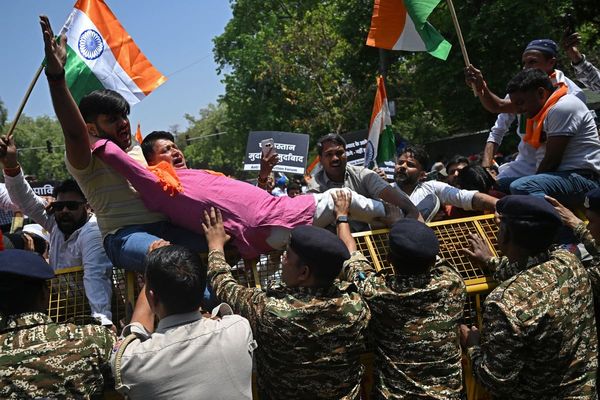
Pope Francis, the first Latin American and Jesuit pontiff, has died aged 88, just hours after making a surprise appearance in St Peter's Square on Easter Sunday to bless thousands of worshippers.
The Vatican confirmed his death early Easter Monday morning. Cardinal Kevin Farrell, Camerlengo of the Apostolic Chamber, announced that the Pope passed away at 7:35am at his residence in the Domus Santa Marta following a prolonged battle with respiratory illness.
As tributes pour in from across the world, many are now asking: What exactly happens when a pope dies? The answer involves centuries-old rites of transition, but Pope Francis' own wishes will shape his final journey in notably different ways.
The Role of the Camerlengo
When a pope dies, the Camerlengo is the first official to confirm the death. In keeping with tradition, the Camerlengo calls the pope's baptismal name — in this case, 'Jorge Mario' — three times before declaring him deceased. The papal ring is then destroyed and his private quarters sealed.
On Monday, Cardinal Farrell fulfilled this duty and publicly announced the Pope's passing, marking the official beginning of the Sede Vacante — the period during which the papal seat is vacant.
Pope Francis Requested a Simpler Funeral
While the death of a pope typically triggers a sequence of elaborate rites, Pope Francis had long made clear that he wished to break with tradition in favor of modesty and humility — values central to his papacy.
In April 2024, he personally approved a revised version of the Ordo Exsequiarum Romani Pontificis (Funeral Rites of the Roman Pontiff), simplifying numerous aspects of the ceremony. According to AP News, these revisions were designed to shift focus away from grandeur and towards pastoral dignity.
Among the most striking decisions: Pope Francis will be buried in a single wooden casket, lined with zinc, rather than the traditional triple-coffin structure (cypress, lead, and elm). This symbolic gesture echoes his commitment to a 'poor church for the poor'.
Even more significantly, the Pope requested to be buried not beneath St Peter's Basilica — the traditional resting place for popes — but instead in the Basilica of St Mary Major, a location with which he held deep personal devotion. According to Reuters, he often visited the basilica before and after international trips to pray before the icon of Mary, Salus Populi Romani.
The lying in state will also reflect these changes: rather than resting on an elevated platform, the Pope's body will be displayed in an open coffin inside St Peter's Basilica to allow the faithful a more subdued way to pay their respects.
Additionally, new rites will see the confirmation of death conducted in the Pope's private chapel instead of his bedroom, and several ceremonial elements — such as displaying the papal staff — have been omitted. As Religion News Service reported, these alterations aim to center the liturgy on reflection and service rather than spectacle.
Who Runs The Church In The Meantime?
Until a new pope is elected, the College of Cardinals collectively oversees the Church. Their powers are limited to day-to-day governance and funeral preparations. No major decisions — such as doctrinal pronouncements or appointments — can be made during this time.
The Conclave: Selecting The Next Pope
Roughly 15 to 20 days after a pope's death, a conclave is convened in the Sistine Chapel. Here, all cardinals under the age of 80 vote to elect the next pope, with a two-thirds majority required to declare a winner.
The voting process is entirely secret. Once a new pope is chosen, white smoke billows from the chapel's chimney to signal to the world that a successor has been elected.
Burial And Legacy
Following the funeral, Pope Francis will be laid to rest in the Basilica of St Mary Major, fulfilling his long-stated desire to remain spiritually connected to the Roman faithful. His Fisherman's Ring, symbolizing the papacy, will be ceremonially destroyed by the Camerlengo, officially ending his authority.
Francis leaves behind a legacy of humility, compassion, and reform. His tenure was marked by advocacy for migrants, climate action, and a more inclusive Church. However, divisions over same-sex relationships, abuse scandals, and resistance from traditionalists remain challenges for his successor.
As the world enters a period of mourning, Catholics and observers alike are preparing for a new chapter in the Church's history — one shaped by the vision Pope Francis carried, even into death.
Originally published on IBTimes UK








